Alain Robert Interview: Legendary Climber Speaks on Free Soloing

The controversial French “Spiderman,” known for his illegal building climbs, was also a pioneering soloist on rock in the 1980s and 90s.
By Owen Clarke
Published on: 05/26/2023
Frenchman Alain Robert is best known for his free solos of skyscrapers and other urban landmarks—Taipei 101, the Sears Tower, the Sydney Opera House, the New York Times Building, the Petronas Twin Towers, and the Burj Khalifa, to name a few.
The 60-year-old has been a prolific urban free soloist for almost three decades and has been climbing for over 40 years (overcoming several heinous accidents, including a 65-foot ground fall in 1982). Today, he lives in Bali, Indonesia, with his second wife and their 10-year-old son.
But Robert has no intention of settling down, despite his age or family. Last September, in honor of his 60th birthday, he scaled the 600-foot Tour Total skyscraper in Paris. Just a couple of months ago, he climbed another Parisian skyscraper protesting France’s recent controversial pension law, which raised the retirement age from 62 to 64.

Alain Robert has always been an edgy figure in the counterculture sport of climbing. The Stonemasters, Stone Monkeys, and the other dirtbag pioneers who followed kept their antics out of the limelight in Yosemite Valley, but from the mid-1990s onwards Robert took to soloing skyscrapers in major metropolitan areas on live television, in front of hundreds of thousands—if not millions—of eyes.
Even today, he posts images of himself sipping champagne while dangling off of building faces, wears flashy, bedazzled suits more akin to Mick Jagger than Alex Honnold, and usually climbs illegally. (He’s been arrested over 100 times.) He’s also never afraid to voice controversial opinions, about topics ranging from climate change to COVID-19 lockdowns to free speech and the war in Ukraine.
He’s best known for his urban exploits, but Robert’s roots—and perhaps his greatest achievements—are on rock. He was a prolific free soloist in the 1980s and 1990s, soloing two lines graded up to 8b (5.13d), and over a dozen in the 5.13 range.
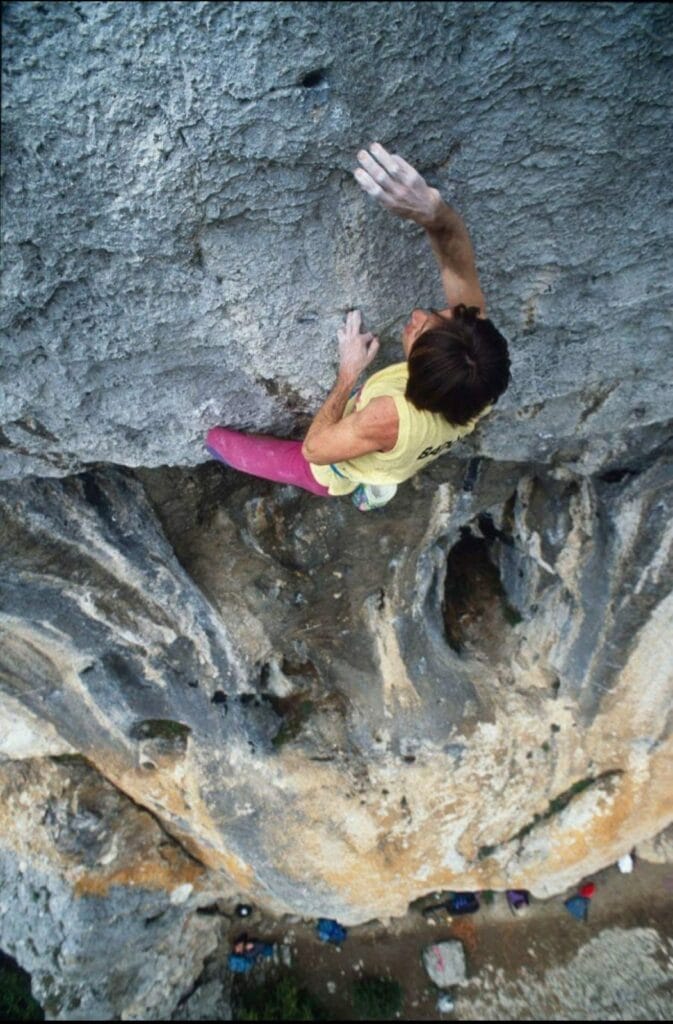
Climbing grades have since moved further up the ladder, but at the time, this was very near the cutting edge of human possibility. In 1991, when Robert free soloed Compilation (8b/5.13d) in Omblèze, the hardest roped climbs in the world were only going at around 9a (5.14d) or 8c+ (5.14c), with Wolfgang Güllich’s Action Directe and Ben Moon’s Hubble, respectively.
But while free soloing is currently in vogue, ushered into the mainstream by award-winning films like Free Solo and The Alpinist, Robert feels this wasn’t always the case. Many climbing media outlets, he says, were reluctant to cover his early free solo exploits on rock, for fear of promoting the wrong image. (It’s worth noting that John Bachar, Peter Croft, Catherine Destivielle, and Alexander Huber—to name a few—were also active and famous free soloists during this time.)
Today Robert hopes to recapture what he feels is his lost legacy. The following is a series of excerpts from his lengthy interview with Climbing House’s Owen Clarke.

The Interview
Let’s start at the beginning. Everyone knows you for climbing buildings, but what is important to you, when telling your story?
For me, the best time was the end of the [1980s] and the beginning of the 1990s. Back then, I free soloed two 8b (5.13d) routes and 13 other routes free solo between 8a/b and 8a (5.13c and 5.13b), and two 7c+ (5.13a). You cannot even imagine the number of 7a, 7b, 7c (5.11d to 5.12d) that I have free soloed. For almost 10 years, every f*cking day I was climbing that grade free solo. Daily.
But fortunately, I don’t care any longer. It is a different time. Back then, there was not much photography, certainly no drones, no Internet… When I did my best free solos, even Climbing magazine was reluctant [to publish coverage]. They thought free soloing was a bad example, and they didn’t want to show too much about it.
Things are pretty different now, huh?
Yes, the way of thinking has completely changed. It’s a huge U-turn. People understand that maybe its unfair that everybody is talking about Honnold, Honnold, Honnold… and this French guy, no one spoke about him back then, because what he was doing was “far too dangerous” and they didn’t want to advertise that kind of activity. Then he just became famous for climbing f*cking buildings.
So, what changed? Why?
There isn’t any censorship on climbing anymore. With the Internet, millions of people can share videos and pictures daily. No one can stop them. Back then, magazines were a gatekeeper. Now, you can have your YouTube channel, you can post on Instagram. You have your own platform.
It used to be that magazines decided, “Are we going to speak about this guy or not? Because we don’t want to feel responsible if other people attempt these dangerous things, falling and dying.”
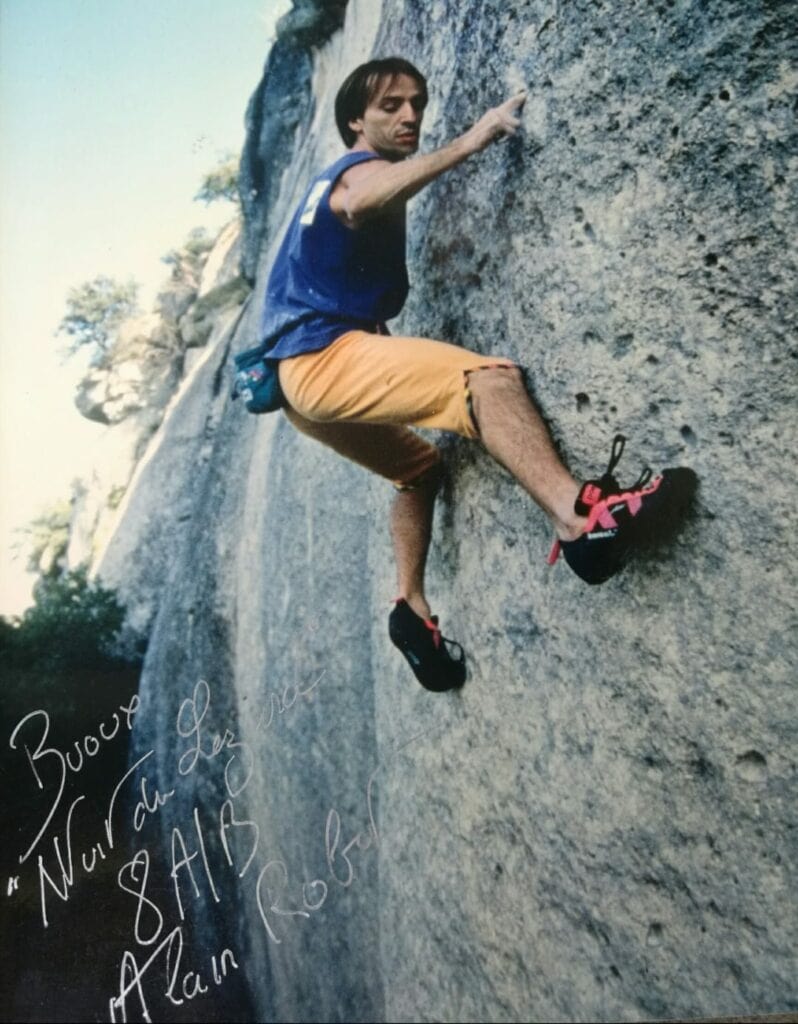
Alex Honnold is the guy who brought free soloing into the mainstream. What are your thoughts on his legacy?
I know Alex. He is a good friend. I love Alex’s attitude because he is a fair person. He is humble. He knows there is a long history [in the free soloing world] before he climbed El Capitan.
It all worked out for him, you know. He got [sponsors] to cover his ascents, he made this film, and he succeeded. But he is always humble. He is a f*cking cool guy. So you know, it’s nobody’s fault. Not Alex’s, not nobody’s. But somehow, my legacy has been stolen from me.
“Stolen” is a strong word. You feel that way?
Well, it’s okay really, because with the Internet, what I did is resurfacing. There is a long interview that Alex gave talking about me, this has helped me a lot, and other things. Otherwise, I was going to be [forgotten] until the end of time.
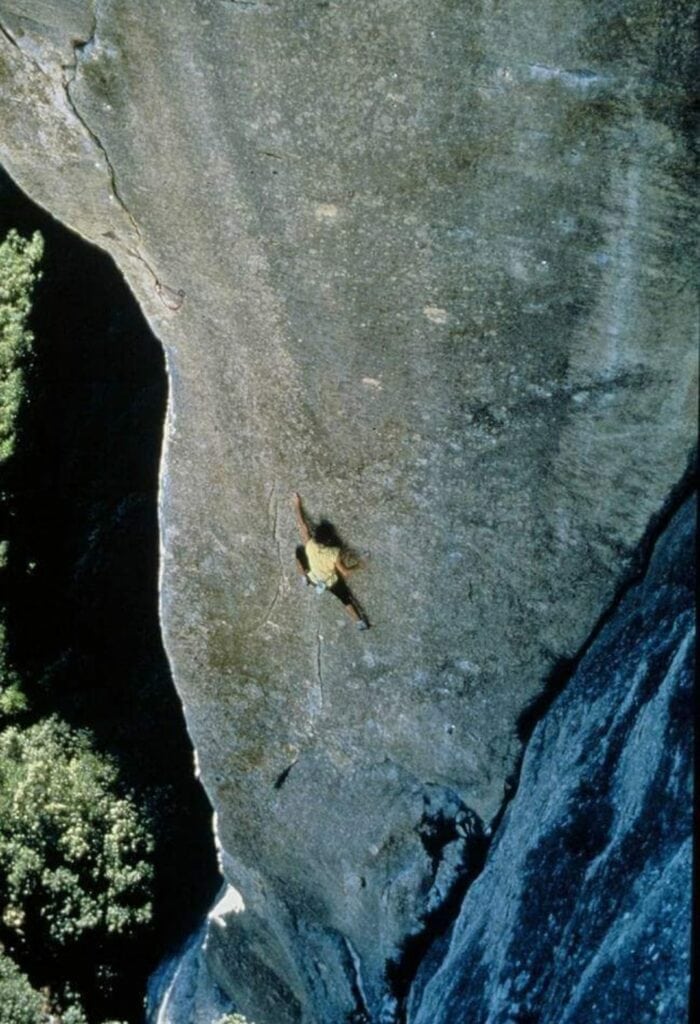
Why is your legacy especially important to you, now?
Well, when you reach 61, you are moving backward in some ways. You are watching, remembering the things you’ve been doing all your life… climbing and free soloing for almost 50 years. I’ve realized that I have this desire to leave a trace of something.
Why did you choose to move away from rock and start climbing buildings?
[Alain explained that he was introduced to climbing buildings while working on a film in the early 1990s]
At first I thought it was insane, but the director paid me to take a trip to the U.S. and visit big cities: Chicago, New York, Dallas, Houston. I realized there was interesting potential. For me, it came at a good time, as well. Because at that time I felt that every day I could potentially die. I knew I was pushing it. I was going too close to my limits. I felt some nights “Wow, today it was close, tomorrow could be the day I die.”
But I was young, and that was the way I was living. Some other soloists were doing safer routes that mostly relied on physical power. But I was doing routes with dynos, friction, slopers… I was succeeding but with no real margin for error.

So you switched to buildings to avoid that risk? To be safer?
I knew that if I continued that way [free soloing on rock] I wasn’t going to last long. Although a few buildings, like the Sears Tower or the UOB [United Overseas Bank] in Singapore, are very difficult, overall climbing buildings is much safer than rock. It’s consistent. If you are well-trained and physically fit, you can make it.
When was the last time you climbed on rock?
The last time was in Verdon about seven months ago. But before that, for 22 years I did not climb on rock. In Verdon though, I onsight free-soloed 6a/b [5.10b], I didn’t know the grade or the name of the route when I started. I nearly fell, actually. I realized I’ve completely lost what it is to climb on rocks. But I am a purist. I will always climb free solo. The day I can’t climb free solo any longer, I will retire. I am pretty much like John Bachar.
And Bachar died climbing, right? Are you saying you’re going to climb until you die on the wall?
Well, we don’t really know if he slipped, or had a clot or some other health issue. It’s kind of unclear the way he fell and died.
But do you intend to die soloing, or do you want to retire?
No, no of course not. I have a family, you know. If I can climb for another ten years, I will be really happy. Now, I’m training regularly, maybe five days a week at home. But climbing outside, I’m only doing that maybe three times a year.
I’m not trying to do anything complicated, although even easy things are now, for me, complicated. So in that way I’m still pushing my own limits, even though what I’m doing is not really difficult.
So you still plan to climb big buildings in the future?
Oh yeah. In October I will be climbing some big buildings, and I’m going back to Verdon to climb rock as well. That is more important to me, now.
I’m not saying that I don’t like [buildering], I still do, but I did it for almost 30 years, and the variety and beauty of the landscape on rock is much greater. Buildings can never top a truly amazing natural landscape, what you find when rock climbing. There is no comparison.
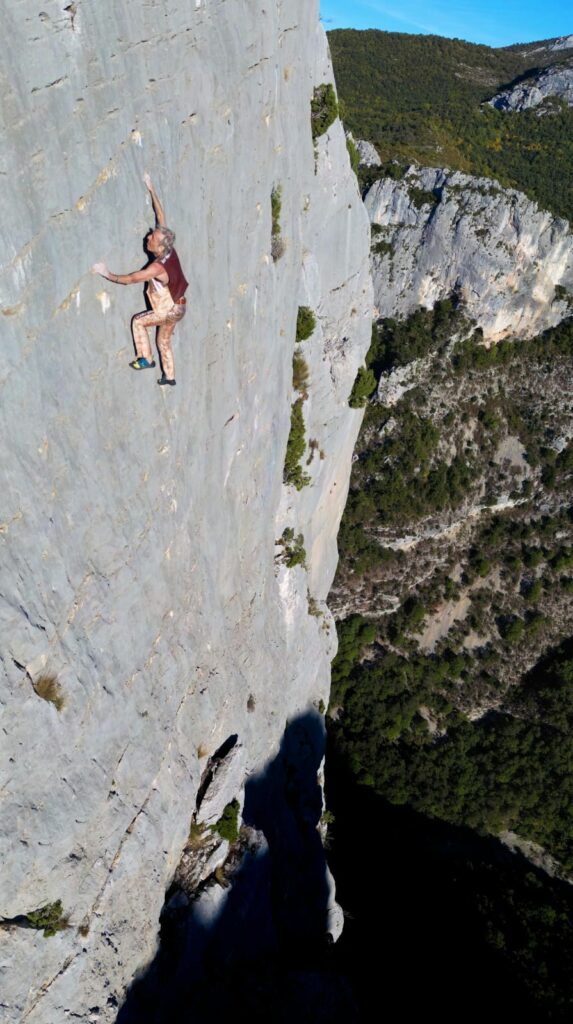
You were injured very badly when you were young. Can you tell us about that?
In 1982, I fell from about 20 meters [65 feet] headfirst, and I landed on some limestone slab at the base of the climb. Both wrists completely exploded. The doctors told me, “Your wrists are like scrambled eggs.” I tore the skin and flesh, I lost nearly 45% of my blood, and my elbows were badly damaged because my forearms broke my fall.
If I am still alive, it’s because of my forearms. They absorbed all the force. After that, I cracked my skull, fell into a coma, and broke many other bones. When I got up from the coma, the surgeon told me I would never be able to climb again. He told me it was a miracle I was still alive. [Robert was declared over 65% disabled.] He told me there was nothing he could do. So he fused my wrists in the neutral position, and now I must use my shoulder joint for any pronation and supination.
I never really recovered. I got back the muscles, but my wrists were reconstructed in a very anarchic way. All of my tendons are diverted inside my fingers. There is no symmetry. For example, I cannot squeeze with my right hand because I damaged the ulnar nerve. Two of my fingers do not really work, and I have no pinch between my thumb and index.
When this happened I was young, not even 20 years old. My whole world was collapsing. But I wasn’t even famous back then. I became famous afterward, with my destroyed body. I was lucky. I came back from h*ll. Or maybe heaven. But I never took it in a negative way. I have suffered. But it has given me a lot of strength.
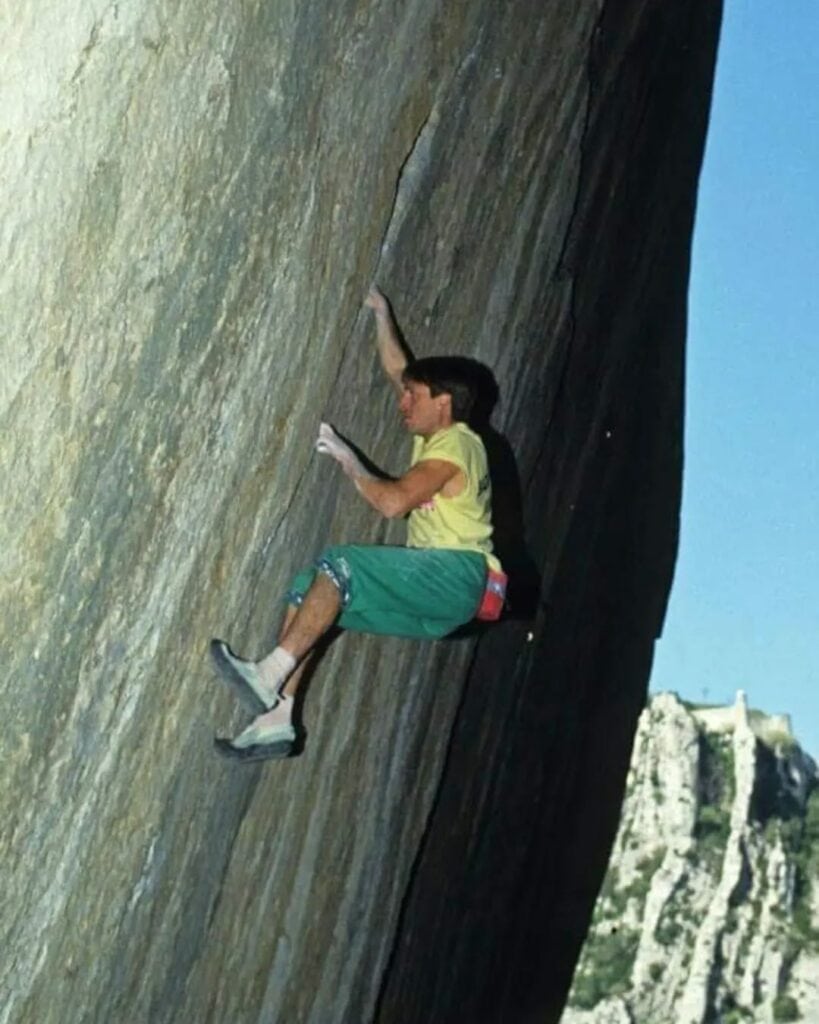
Is there any other experience that’s been transformative in your life?
When I was very young, I didn’t have a dream to climb. I just wanted to be courageous with my life. I wanted to be like Robin Hood. D’Artagnan. I didn’t know how. One day I watched a film about a plane crash near Mont Blanc and two climbers who tried to climb up and rescue survivors. This fascinated me and gave me the idea to fight against myself. Against my fears. This is how I became interested in climbing.
Did you have fear while soloing when you were young?
Yes, of course. I was very afraid of heights, even while driving in the car with my father on mountain roads. So you know, after watching this movie, I was nine or ten years old, and I was living in a seven-story building with my parents. I regularly looked at our building. It looked easy to climb up the outside.
One day, when I was at school, there were two missing teachers, so I went home early when my parents were both working. I realized I didn’t have a key, I was stuck outside. So I decided “Why not?” I made it to the top. That was an amazing victory for my mind. It liberated me from that phobia. That fear.
How do you manage fear today?
There is no opportunity for it. When you are living such a dangerous existence, between life and death, your survival instinct is stronger than anything else. We human beings can’t do two things at the same time. I cannot climb [5.13d] free solo and think about being afraid, or about not paying my electricity bill. I am f*cking focused on what I am doing. If I’m climbing, I’m climbing.
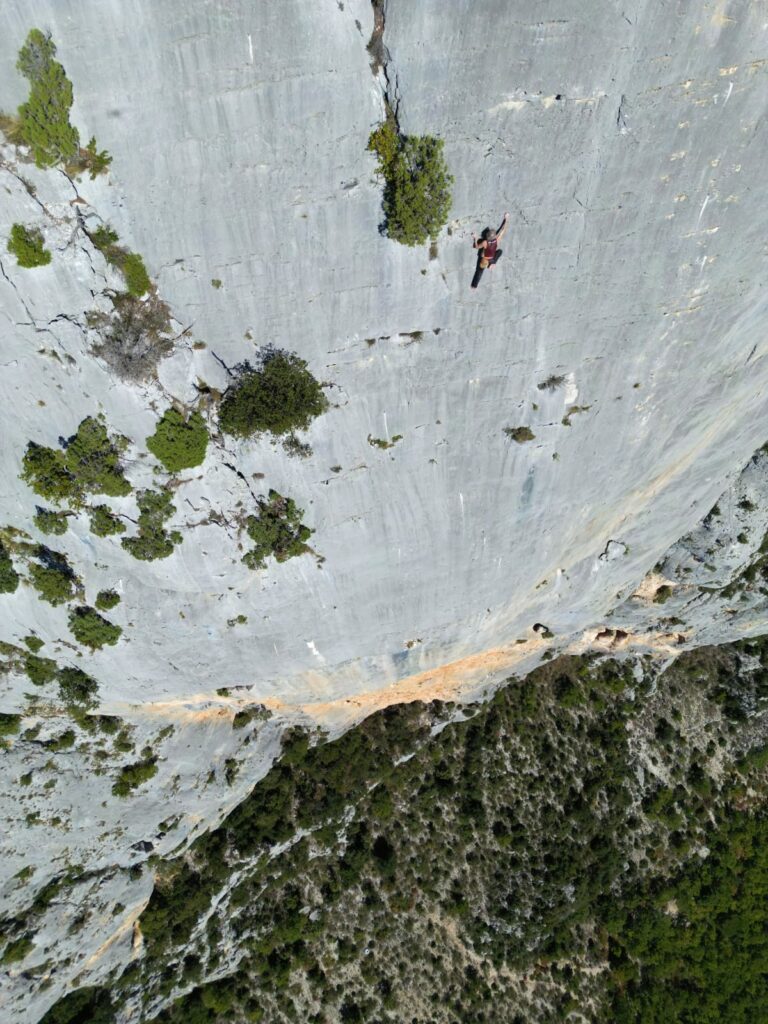
Anything else you feel is important to tell your story?
Well, I have climbed many, many buildings. But buildings are not as difficult maybe as it appears. Really I have climbed maybe five or six very difficult buildings, the Sears Tower being the hardest. The rest are medium or easy. No big deal. But back then there were no drones and no GoPros. No way to document what I was doing.
So modern camera technology, social media, and the Internet have been an equalizer for you? A chance to achieve the fame you didn’t always have?
Yes, without social media nobody would know what I did 30 years ago. It eliminates the gatekeepers. But I would say social media is also total garbage. There are a lot of people hating me [online]. Wishing me to die. Like, what the h*ll? I’m never judging anyone. Even my biggest enemy… I say let him live. I’m not going to tell him he should fall. People are cruel.
Were people always this way, or is this a result of social media?
No, people were always this way. Some people will never like you, never understand you. But they feel the need to message me and tell me I should fall.
I don’t understand it. If I don’t like you, I don’t wish you ill. Why do people want to prosecute you for doing things you love? I am not hurting anyone, harming anyone. If people don’t like it, then close your eyes. Go away. Buzz off.
But you know, where I stand, it doesn’t matter. I’m still committed to pushing the limits. My limits. I haven’t changed my way of living. Maybe I am older, but my philosophy is the same. It’s related to doing something dangerous.
My limits are far, far, far lower than before. But I can still climb free solo on the edge.

it is a great article . it is completing very well the 1st one . And once again I’m very thankful to Alex Honnold , Alexander Huber and few more for reminding that there was a time i was freesoloing very close to the cutting edge and im not only the person who is known for being arrested after climbing a building . Tks a lot for the great interview. alain
Alain Robert, you are a hero for me! I’m a few years older than you, a modest rock climber since the late 70’s. Never soloed hard, but still pulling down to this day. You’ve eclipsed my portfolio of climbing by 1000 percent! And I’m rather proud of my accomplishments. I dig your choice of climbing clothes too…
Great interview. And yes 49.999…percent of people are below average. And average is not that good.
Alain Roberts , your legacy will last forever! ( and the internet, etc., really helps get your story out!) Though I’ve read of your climbing , I’ve never known the whole picture , they way this article tells!
Good interview. Alain sounds a very decent fellow.